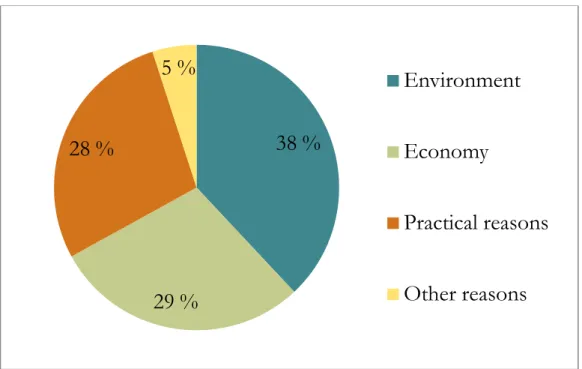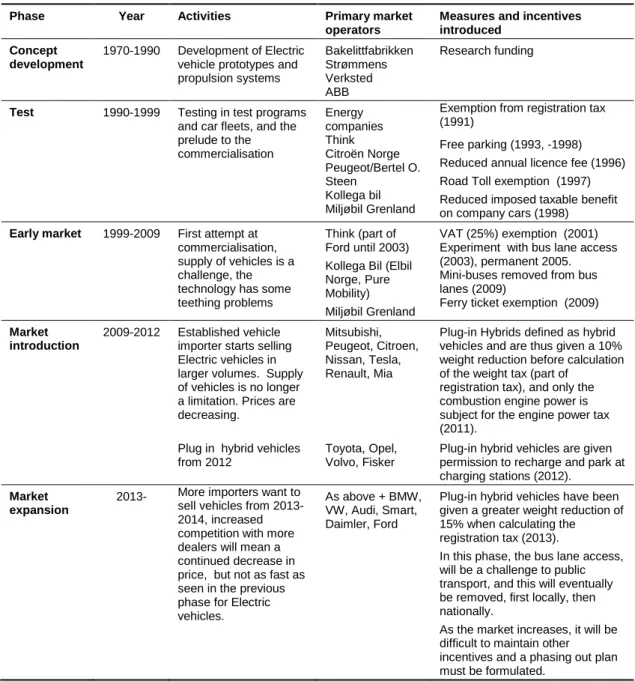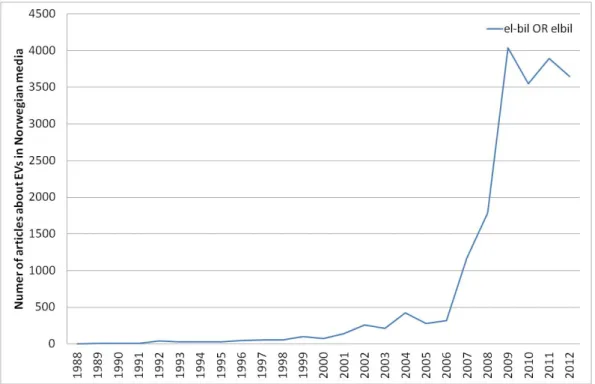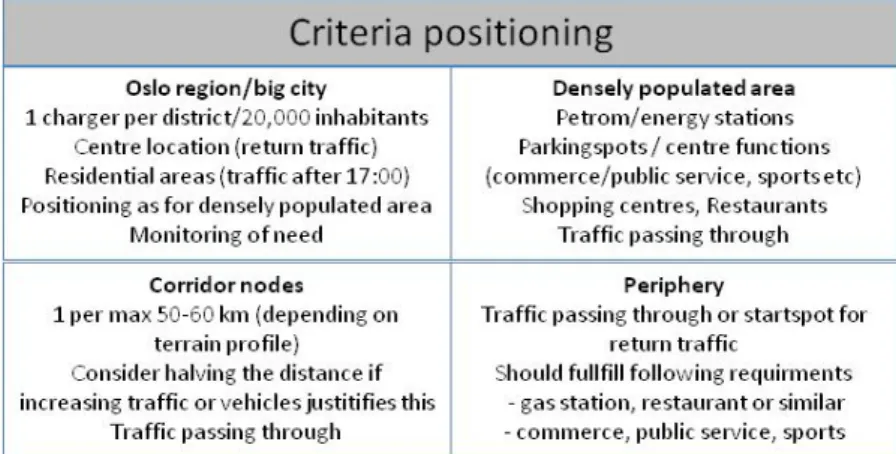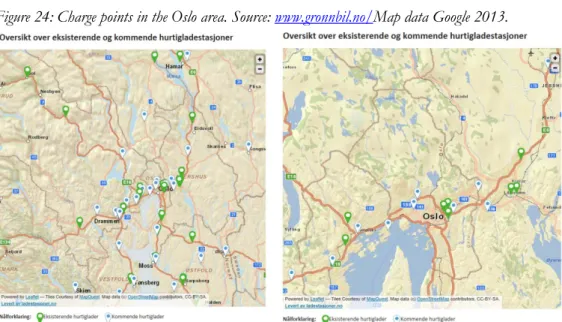The share of electric vehicles in the new car market in Norway is the largest in the world. The share of electric vehicles in the entire vehicle market in the first half of 2013 was around 3%, while the share of the fleet reached 0.5%.
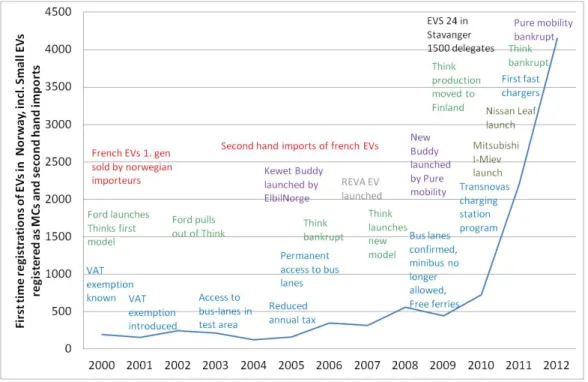
Electro-mobility - a response to climatic and environmental challenges
Scope of report
This type of vehicle has an internal combustion engine connected to a generator that produces electricity that charges the batteries and supplies power to the electric motor while the vehicle is moving. Parallel Hybrid: Has two systems of operation, a common combustion engine (gasoline or diesel) and an electric motor.
Electric propulsion - types of vehicles and designations
The second engine (typically an ICE Internal Combustion Engine) supplies power to a generator, which in turn produces energy for the electric motor and the batteries. Parts of the kinetic energy can be recovered by running the electric motor as a generator during braking, thereby recharging the batteries.
Prerequisites for environmental effects
Plug-in hybrid vehicles are also being presented, which can be driven exclusively on electricity between 20 and 80 kilometers. Where does the energy in batteries come from; it is the energy mix used.
Frames of reference
Users, individuals or other decision makers need different types of information at different stages of the diffusion process. I Knowledge: In the initial phase, knowledge of the new technology (or new organization) and its operation is required.
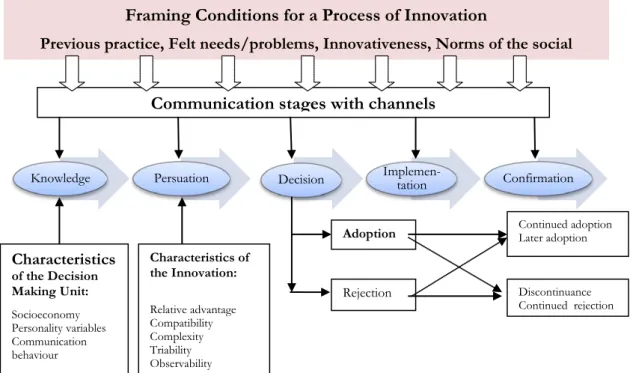
Development of the Electric vehicle in five phases
In the last six years, interest in electric cars has grown in the Norwegian media, see Figure 3. A survey of car use by TØI in the same year showed that 30% of those living in urban areas would consider an electric vehicle as the main family vehicle, and 77% would consider it an additional vehicle (Ramjerdi et al. 1996).
Concept development 1970-1990
A man named Lars Ringdal was inspired by the oil crisis and developed a small electric car with a plastic body in the 1970s, see Figure 5. ABB Battery Drives in Vestby outside Oslo developed a propulsion system for electric cars that was used in the first VW Golf Citystromer Electric Cars , which was made in 1989, see Figure 6.
Test phase 1990-1999
Norwegian Project ELBIL Electric Vehicle (Electric Vehicles): pictured in front of Strømmens Verksted with test plates CC 28, photographed in 1972. Bellona managed to obtain a value-based registration tax exemption for its Electric Vehicle in 1990, and then all electric vehicles were excluded.
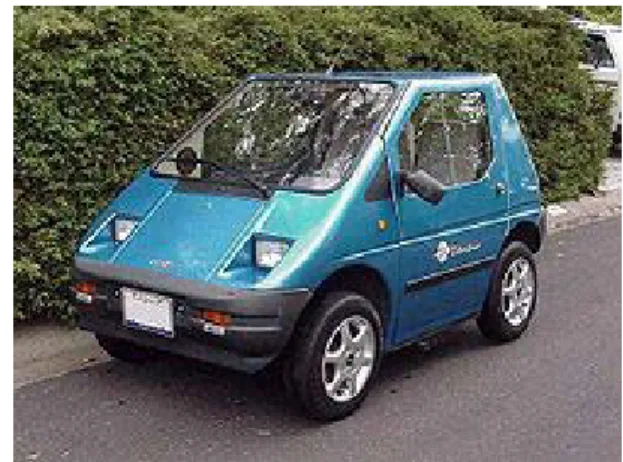
Early market phase 1999-2009
In the early 1990s, electric cars were low on the political agenda, so study trips for politicians were organized. Indian car manufacturer Tata bought Miljøbil Grenland and planned production of electric vehicles in the Grenland region based on 'gliders'1.
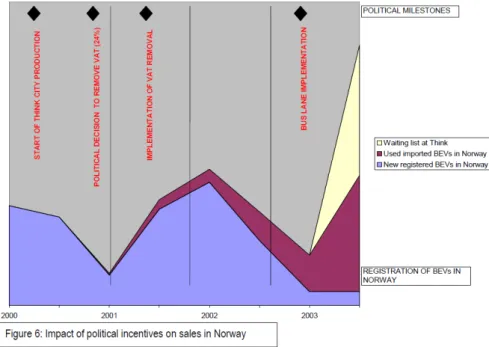
Market introduction phase, 2009-2012
The financial crisis abruptly halted access to assets, and Think had to look for new financing before it could start manufacturing the car. The permanent access to bus lanes from 2005 and the ban on minibuses from 2009 created enough demand in the market for Mitsubishi to quickly sell over 1,000 of the I-miev Electric vehicle, which went on sale in late 2010.
Market expansion phase from 2012
In the beginning, many stations were free, now most stations cost money. The new Leaf cost from €27,100 (without delivery costs) in Norway, and deliveries started in the summer of 2013.
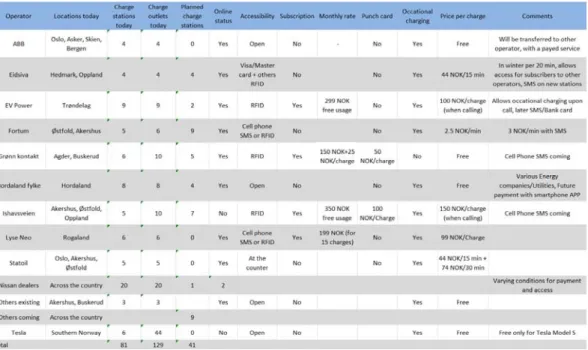
Important elements have converged
Financial deals have made testing new technology less risky, and the continued testing and use of electric vehicles over the past 10-15 years has also helped. The fact that many preconditions for a good process of innovation or convergence are present makes it possible to reach a 'tipping point', i.e. the point at which a series of different individual choices can cause the equilibrium or collective situation in a system to change significantly.
Targets and analyses
The Norwegian target was stricter than the EU's as it only related to emissions from the vehicle. In 2009, it presented an action plan for the electrification of road transport, which assumed that it would be possible to reach a 10% share of electric cars and plug-in hybrids in the passenger car fleet by 2020.
State measures and incentives
The registration tax applies to all vehicles registered for the first time in Norway, except for electric vehicles and hydrogen cars. If the vehicle is more than three years old, 75% of the list price is taken into account, and for electric vehicles only half of this fee.
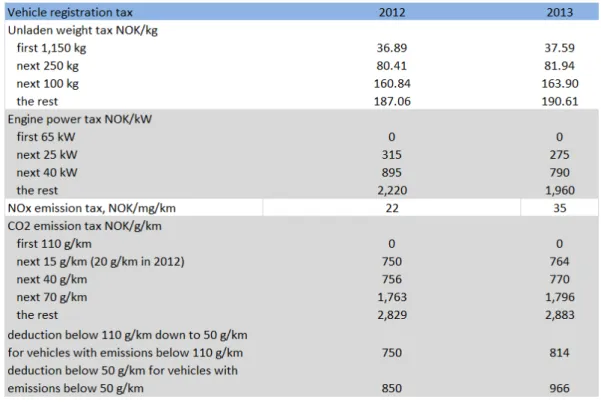
Municipal and local incentives
Plug-in hybrids do not have the legal right to not pay a parking fee that electric vehicles and hydrogen vehicles have. At all time-limited charging stations, electric vehicles and plug-in hybrids must have a parking disc and adhere to the maximum time for the location.
Institutional policy instruments and measures
An EV parking and charging facility is being realized at Aker Brygge with space for 50 electric vehicles. In addition, many municipalities have purchased one or a few electric vehicles for evaluation and testing.

Research and demonstration projects
REKKEVIDDE (RANGE): The project studies challenges with the range of electric vehicles in Scandinavian climates. One of the subprojects is the development of a test arena for testing electric vehicles in the Kongsberg – Oslo region.
Status in relation to goals
InnoBike: The project started at TØI in 2013 and will study how electric bikes can contribute to more people choosing to cycle on daily trips in the Oslo region. The project is a collaboration between the municipality of Trondheim, Trønder Taxi, Stjørdal Taxi, SINTEF and NTNU, and is financed by Transnova; see www.Transnova.no.
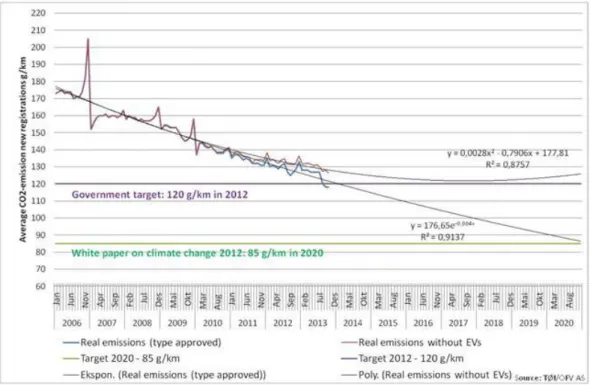
The Electric vehicle industry in Norway
Initially, the French electric vehicles were leased and the French energy company, EdF, became one of the owners. Electric Mobility Norway is a broad, composite group of businesses who want to look at business opportunities at the interface between electric vehicles and public transport.
The vehicle importers
Miljøbil Grenland then developed a concept for the production of electric vehicles based on hovercraft (vehicles delivered without a drive system) from the automotive industry; first the plan was to use the Smart fourtwo, later the Indian vehicle, Tata Indica. Eltek has a contract to supply chargers to Volvo's V60 plug-in hybrid, while Kongsberg Automotive supplies, among other things, gear selectors and other components for various Electric vehicles marketed by the major car manufacturers.
Non Government Organisations (NGOs)
At the end of 2011, Nissan started selling Leaf through its dealers, which was expanded to all Nissan dealers in Norway during the second 6 months of 2012.
Information services
Move About focuses on two market groups, regular business companies and individual private users. They also want to give employees flexibility in choosing a means of transport for movements during the working day, as they can rent vehicles during the day from Move About as needed.
Activities
The goal is to provide an efficient use of vehicles, thereby reducing the costs of daily business transportation, including parking or taxi rides.
Public - Private Partnerships
Energy consumption and emissions
The increased consumption of electric power will then be compensated by other measures in quota-regulated sectors. If the electricity comes from a carbon-free source such as Norwegian hydroelectric power, the EV will fare well in the life cycle assessment.
Development of batteries
In light of this, the service life of electric vehicles may be somewhat shorter than that of a corresponding gasoline vehicle. Meanwhile, it should be remembered that there is very little data available to calculate the lifetime of Li-on batteries.

Charging station technology for normal and fast charging
Transnova wanted to quickly gain experience with fast charging, and on several occasions gave support to fast charging stations based on the Chademo charging standard (Figure 20 on the left). The rapid charging strategy (Econ. Pöyry 2012) involves a rollout rate corresponding to approximately 1 fast charger per 250 electric vehicles, and that initial locations will be in the Oslo area, which hosts the largest population concentrations in Norway, and along the West Coast up to Trøndelag.

Scope and localisation as of April 2013
As we can see, three of the charging points were in use in Billingstad and Drammen (Kjellstad). In 2012 it announced a tender for a framework agreement regarding the construction of another 800 charging points available to the public, as well as 720 charging points for.
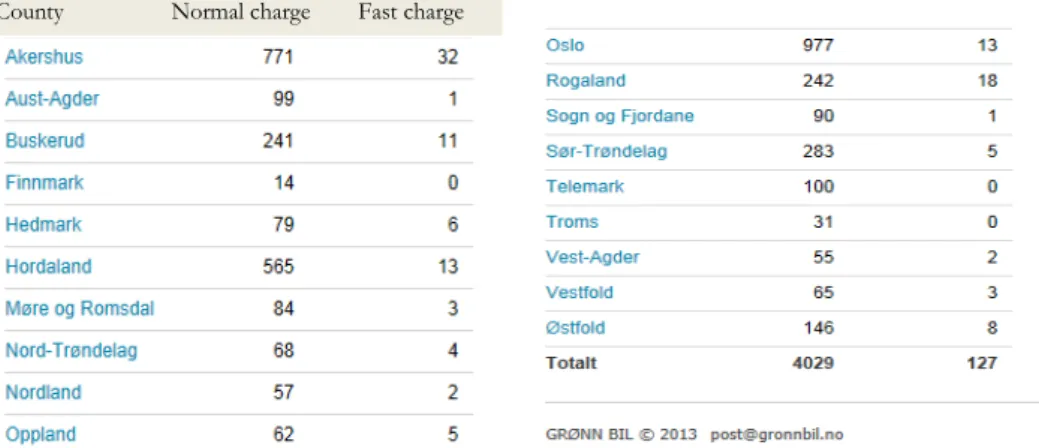
Costs for charging stations
The fact that the number can be >100 is because for some electric vehicles can and do park sideways). Occupancy can be more than 100% as the smallest electric vehicles, those less than 2.5 meters in length, are allowed to park sideways, providing space for 2 vehicles per marked space.
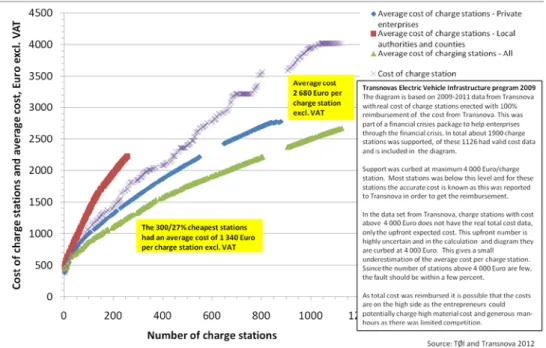
Cost benefits of charging system
Here you can see that with access to workplace charging, daily mileage can double from 50 miles to 100 miles, and the number of vehicles that can be Electric will triple for 2-6 day adaptation curves. Thus, access to a public infrastructure can increase the market for electric vehicles and increase the use of electric vehicles that already exist in the vehicle fleet.
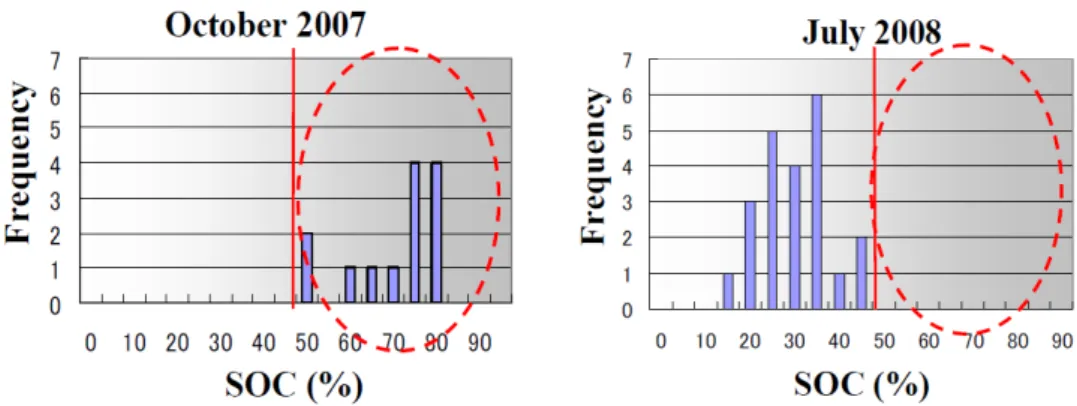
Costs for vehicle ownership
At the end of the Mitsubishi Outlander PHEV (Plug-in Hybrid) will be launched on the Norwegian market. These vehicles are not registered in the New Vehicle guide as they are not passenger cars.
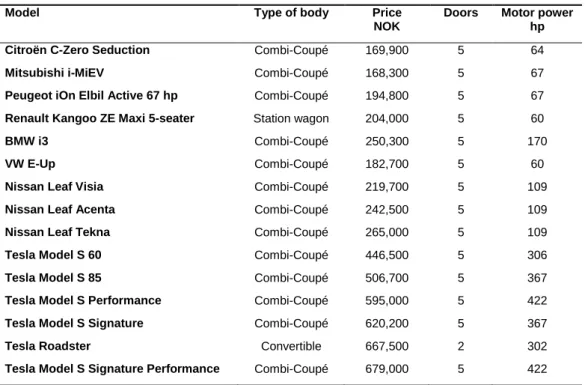
Vehicle sales from 2000-2012
The large fluctuations in sales of the Mitsubishi i-MiEV were probably due to the arrival of a load of vehicles from Japan. Electric vans began to be sold in 2011, when the Ford, Røhne and Selmer dealership in the Oslo area entered into an agreement with Azure Dynamics to import and sell a.
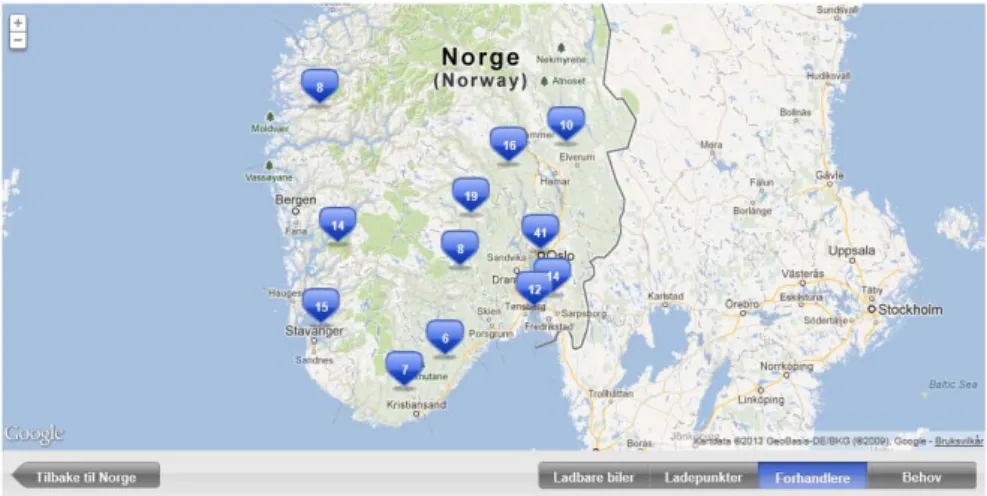
Vehicle sales in the first 6 months of 2013
Norway ranks best on a global scale in terms of the number of electric vehicles in relation to the population. Access to bus lanes has had a decisive effect on the initial stages of the development of the electric vehicle market.
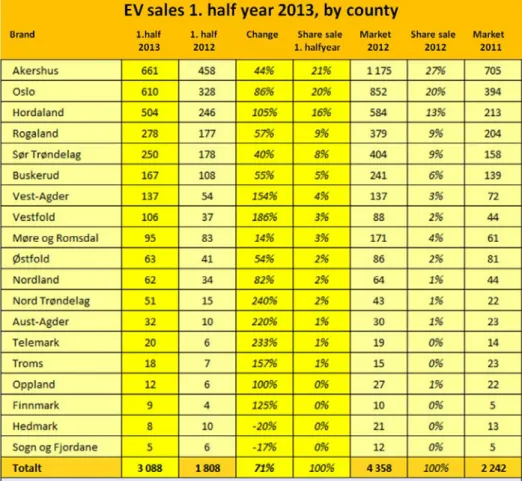
The EV fleet
Market development in Norway compared to other countries
User surveys – weaknesses and content
We also have a study (Michelin 2013a) in which citizens from three Scandinavian countries were asked about their views on electric vehicles. What are the advantages and disadvantages of electric vehicles according to experienced users and people in general.
Benefits and disadvantages of Electric vehicles
Above are different cross-sections of the population and lower down are different electric vehicle (EV = Electric vehicle) owners. In a study by Sentio (Hoen 2012) of a cross-section of the population, it was found that on average 16 per cent
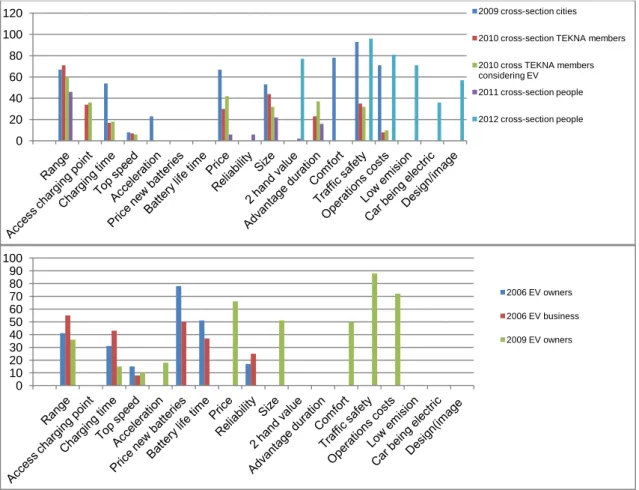
Who purchases or consider purchasing an EV
Michelin's (2013a, 2013b) cross-sectional study shows that women in Norway are almost as motivated to buy an electric vehicle as men. Range is considered the biggest barrier to purchasing an electric vehicle in all regions.

How Electric vehicles are used
We found few studies that provide information on the length of daily trips by electric vehicle. We also included daily kilometers for people with a driver's license who drove a car on the date of registration of the RVU (National Travel Survey) in 2009, (Vågane 2013).
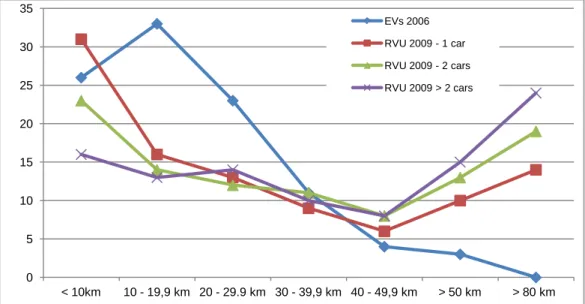
Potential for Electric vehicle usage
This means that they have an economic basis to replace one of their cars with an electric vehicle. In different segments of the population, more people will consider buying a hybrid car than buying an electric car.

New Electric vehicles meet Euro NCAP requirements
Traffic accidents
Fires
Little knowledge of electric two-wheelers
Electric cycles important for increasing proportion of bikes
Design and performance of electric cycles
Market development and incentives
In Norway, there are no charging stations for electric bicycles, as there are for electric cars. Electric bicycles are more expensive than ordinary bicycles and cost in Norway from approximately NOK.
Effects of electric cycling
In workplaces where there is no access to a cloakroom or shower, an electric bike will give employees who want to cycle without breaking a sweat the opportunity to cycle that they would not otherwise have. International experience suggests that e-bikes can give people who would otherwise not have started cycling an impulse and opportunity to start cycling, which will benefit public health.
Electric scooters
We have not investigated what types of support are available for this type of electric vehicle in Norway. The Norwegian Electric Vehicle Association (2012) introduces the electric scooter, see figure 68, as an optimal solution for urban mobility, in line with the ambitions of politicians in Oslo.
General agreement on EV-policy
The root cause of the disagreement is likely based on a different understanding of how market dynamics in the auto industry affect incentives. Proponents of the current policy believe that incentives and support for infrastructure enable the introduction of new technology by reducing risk and costs for private operators and making it possible.
How to reach the 85 g per km target?
The rise of the market reduces the cost over time and eventually the market will support itself. In the alternative scenario in which both technologies succeed, the required market shares of each needed to achieve the target will be lower.
Changes to the tax system
At the same time, this will also make electric cars and plug-in hybrid cars more cost-effective compared to petrol and diesel-powered cars. Reduce the registration tax on plug-in hybrid cars to a minimum contribution of NOK 3,447.
Monitoring bus lane access
Electric vehicle sales are down 20% (because in this scenario cars are cheaper and a smaller portion of electric vehicle sales are motivated by access to bus lanes). Electric vehicle sales fall by 5-10% (because sales volume in this scenario is driven more by bus lane access, which has high user value).

Road tolls and parking charges
However, it is not known whether they have done this even before purchasing an Electric vehicle or not. Many EV buyers have parking at home and access to free parking at work, regardless of the type of car they drive.
Transnova to be continued
Last but not least, there can be uncertainty about the numbers passing through the toll areas. For those who don't have access to parking at work, this incentive can be especially important.
Reviews of the significance of the incentives
It was based on the value of the car and the exemption was very important for the start of the test programs in the 1990s. Free charging stations in the municipality of Oslo make it difficult to establish a commercial activity.
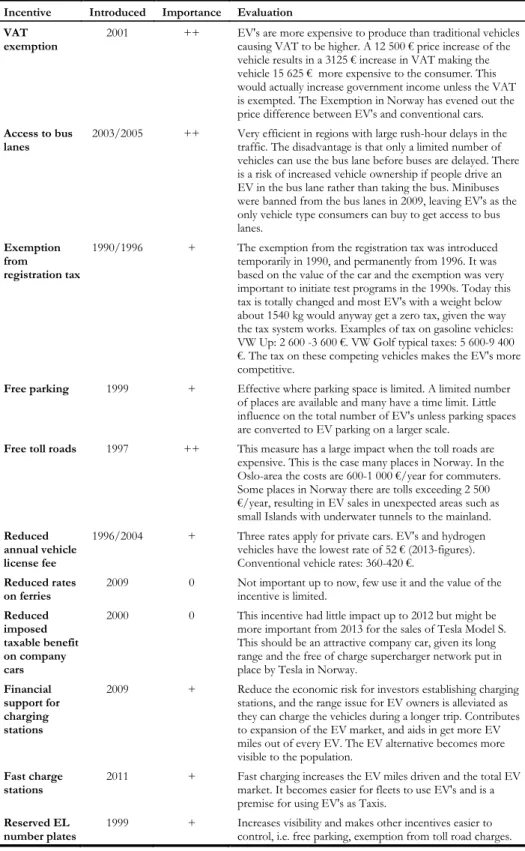
Cost of incentives – overall assessment
For fast charging, a grant will be awarded to cover part of the establishment costs, but no grants are awarded for its operation. There is no cost as long as there is available capacity, but the benefits to society may be higher for the alternative use of spare capacity.
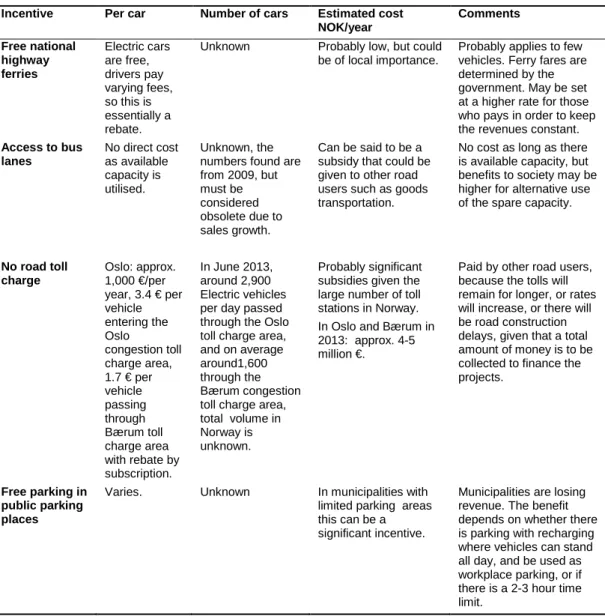
Situation in Norway
Transnova finances the operation of the Grønn Bil organization, which aims to promote the use of electric cars in. This applies in particular to payment systems where the annual cost has been over €2,500, e.g. the underwater tunnels to the islands/fjords in the western part of the country.
Strong competition and Electric vehicles for most people
The energy industry has become financially involved in the business of charging infrastructure for electric vehicles, through grants from Transnova for the establishment of fast charging stations. There is little money to be made so far, but the operators seem to accept that well-positioned fast chargers can provide income in the long term.
Norway will encounter challenges in the phasing out of incentives
Untapped potential in car fleets
Paradoxically, fleets are lagging behind private consumers in the use of electric cars in Norway.
Sales of Electric vehicles will remain high in coming years
Sales of Electric vehicles is important for reaching national environmental goals
The alternative where both technologies succeed in the market will result in lower required market shares of both vehicle types. At the same time, this will also make electric vehicles and plug-in hybrid vehicles more cost-effective compared to petrol and diesel cars.
The diffusion process has gone by the book
Electric vehicles are also, based on their relative merits, suited to the needs of multiple user groups. One can also see the tendency for certain neighborhoods to have higher proportions of electric vehicles.
Future knowledge and research needs
What incentives can contribute to the increased use of electric vehicles in private and public service or commercial fleets. How can the use of electric vehicles be spread from the cities to more rural areas, where electric vehicles are as suitable for local transport needs as in the cities.
The SEVS Way - June 2013
SEVS 2 used an “electromobility journey” based on the “tough questions” posed by the industry to develop and test the tools. 34;The four scenario model from SEVS Phase 1 has been further developed and together with the driving force model, use cases with actor selection criteria and sustainability analysis are some of the tools provided by the SEVS 2 project.
Overview of purchase and tax incentives for Electric vehicles in the
Electric vehicles are exempt from BPM registration tax and annual road use charges. PORTUGAL Electric vehicles are exempt from ISV registration tax and annual road use charges.
Price history for Electric vehicles 1999 - 2013
Overview of Norwegian interview surveys on electromobility
Distances covered by vehicle type and vehicle age
Press release regarding new and ambitious goal of reducing
Accidents featuring Electric vehicles
I 'turned' the steering wheel to the right and managed to angle the Buddy somewhat - but a collision was inevitable. The driver of the other car crossed into the wrong lane and hit the electric car.

